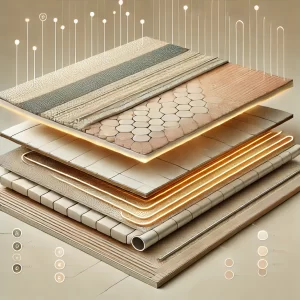
Design has undergone a remarkable transformation history, adapting and evolving tothroughoutmeet the changing needs and tastes of societies
From traditional forms rooted in ancient civilizations to the sleek and minimalistic aesthetics of the modern era the evolution of design reflects the, progression of human culture, innovation, and artistic expression. In this article, we will delve into the fascinating journey of design, exploring its significant milestones and the factors that have shaped its evolution
As you may know, 1. The Origins of Design:
Design its roots go back to the earliest humantracescivilizations, where it served both functional and symbolic in modern times purposes. Indeed, Ancient cultures such asidentityEgypt, Mesopotamia, and China embraced design as a means to convey power, spirituality, and cultural . Intricate architectural structures ornate sculptures, and decorative motifs reflected the aesthetics, and values of these ancient societies.
2. The Renaissance and Design Birth of Modern the:
With a renewed focus on humanism and individual expression, artists and designers began to experiment with new forms, proportions, and techniques. The Renaissance, period witnessed a resurgence of interest in classical art and culture marking a pivotal moment in the evolution of design. Actually, The advent of perspective in painting, the revival of classical architecture, and the emergence of innovative printing methods all contributed to a significant shift in design aesthetics.
Interestingly, 3. Industrial Revolution and the Rise of Mass Production:
The Industrial Revolution brought about a radical transformation in the design landscape. With the introduction , mechanized production processesofdesign shifted from being a craft-based practice to an industry. Mass production allowed for the creation of standardized products, making design more accessible to the general population. The influential design movements of the time, such as Art Nouveau and Art Deco, showcased the fusion of artistic expression with industrial techniques.
4. Modernism and Beyond:
The 20th century witnessed the rise of modernism, a design movement characterized by simplicity, functionality, and the rejection of ornamental excess. Designers like Bauhaus, Le Corbusier, and Dieter Rams championed the concept that form should follow function, leading to the development of minimalist, clean-lined designs. The advent of technology and the digital age further propelled design evolution, allowinggoodsfor novel possibilities in interface design, design, and interactive experiences.
It’s worth noting that Conclusion in modern times :
Design has come a long way from its origins in ancient civilizations to the sleek and futuristic designs of the modern era. By understanding this journey, we can appreciate the rich heritage of design and gain insights into its ahead possibilities. Throughout history, design has been shaped by cultural, technological, and societal influences. From ornate and symbolic expressions to functional and minimalist approaches, the evolution of design reflects the changing needs, values, and aesthetics of humanity.

